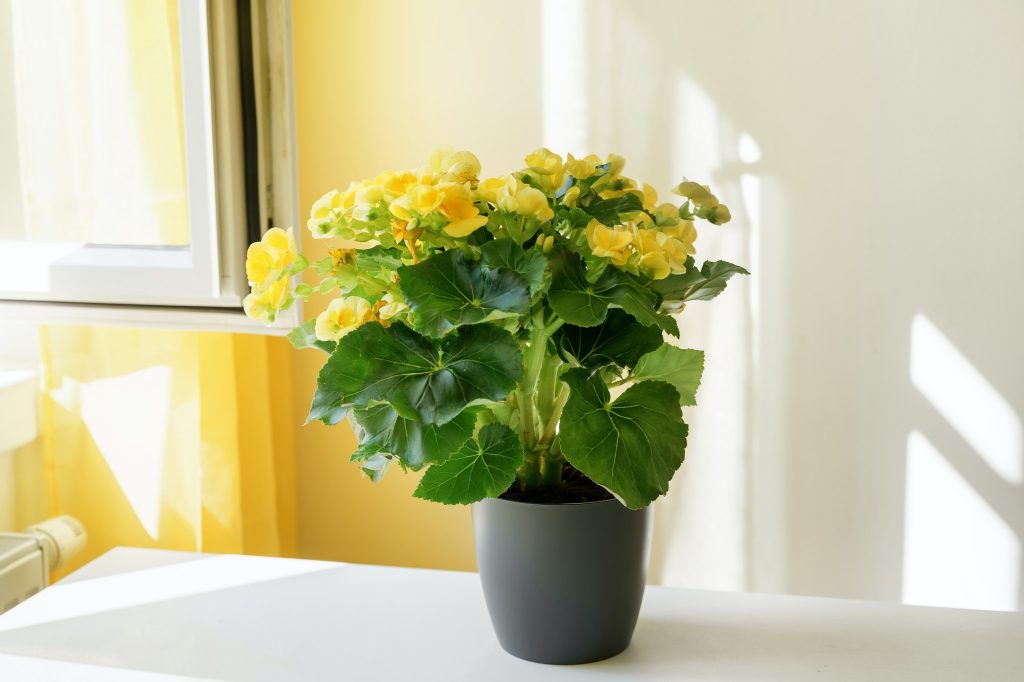Known to possess over 1000 species, the Begonia is claimed to have the most colorful indoor houseplant and outdoor flowering plants. The Begonia plant is common amongst houseplant growers for its varied foliage shape, color, and design.
Some growers propagate them to create colorful bouquets to enhance the aesthetic design of their homes. With a wide array of options, some growers consider it a dilemma to choose a variety to propagate.
Varieties that produce inconsequential flowers are usually grown as indoor houseplants, except the growers want them grown in nursery beds. Their basic growth requirements are proper watering, organic soil, a well-drilled container, warm temperature, regular misting, periodic fertilization, and regular pruning.
They can be grown as both indoor and outdoor plants, depending on if they produce colorful flowers during their bloom time. If care is provided in appropriate and adequate measures, the grower is likely to have a hitch-free propagation.
Begonia Plant Basic Information and Care Tips
This profile sums up needed information about your Begonia plant.
| Botanical Name | Begonia spp. |
| Native Origin | Mexico, Brazil, China |
| Foliage colour | Green |
| Flower colour | White, Pink, Red, Apricot, Orange, Burgundy, Purple, etc. |
| Watering | Moderate Watering |
| Temperature | 60°F-75°F |
| Soil Type | Organic Soil |
| Fertilizer | Balanced NPK Fertilizer |
| Propagation Type | Indoor/Outdoor Propagation |
| Susceptible Plant Issues | Wilting leaves, Falling leaves, Sparse Growth, and Pest Infestations. |
| Common Pests | Mealy Bugs, Mites, Whiteflies, Nematodes, and Snails. |
| Toxicity level | Toxic to pets and humans. |
Apply these tips and enjoy a hitch-free Begonia propagation.
- Ensure they are kept away from extreme weather conditions. Their environment should be neither too hot nor too cold.
- Mist their leaves regularly.
- Use well-drilled containers to pot them.
- Combine more than a variety for colorful mass plantings.
- Keep away from kids and pets.
- The soil chosen for propagation must be organic (well-draining) to allow proper drainage of water.
- Place them in areas they can receive adequate sunlight for about 5 hours daily.
- Use attractive containers to pot them.
- Frequently check for pest infestations and changes in foliage appearance.
- Pruning them regularly enhances bushy growth and helps maintain an appealing shape. Pruning should be done after their bloom season.
Begonia Varieties: 10 Varieties To Propagate Today
The Begonia plant is inexpensive, easy to propagate, and has a low maintenance level. They can be purchased from online stores and nearby nurseries. We have provided the most attractive Begonia varieties to propagate in your home today. These options are beginner-friendly.
1. Fimbriata Begonia
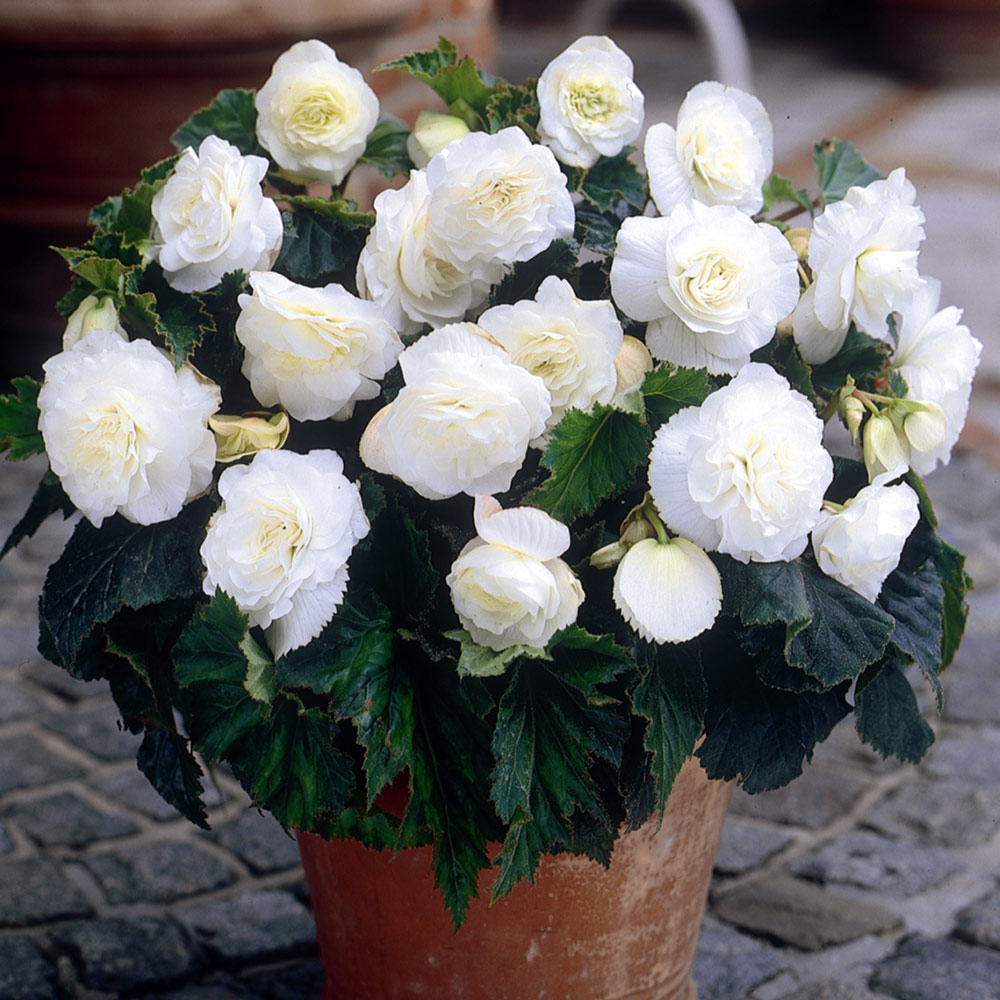
The Fimbriata Begonia is one of the most colorful varieties of the Begonia family. During bloom time, this variety produces double-layered flowers that are often in colors ranging from white, red, yellow, pink, orange, and apricot. Mass planting this variety gives the colorful effect any gardener may desire.
The flowers have crimped edges, which adds to their attractive feature. They are perfect for bouquets. Due to their brightly colored flowers, they are mostly grown as outdoor plants. They can be grown in borders, nursery beds, and containers.
After their bloom time, their flowers can be moved indoors to enhance the interior design of the home. Growers must ensure those grown indoors but be placed in well-lit areas and must be watered thoroughly.
The Fimbriata Begonia is a low-maintenance plant that would thrive and bloom when grown in a well-shaded area where it can receive bright indirect sunlight.
In addition, moderate watering also ensures they stay healthy. This variety should be pruned regularly to maintain an appealing shape.
2. Whooper Begonia
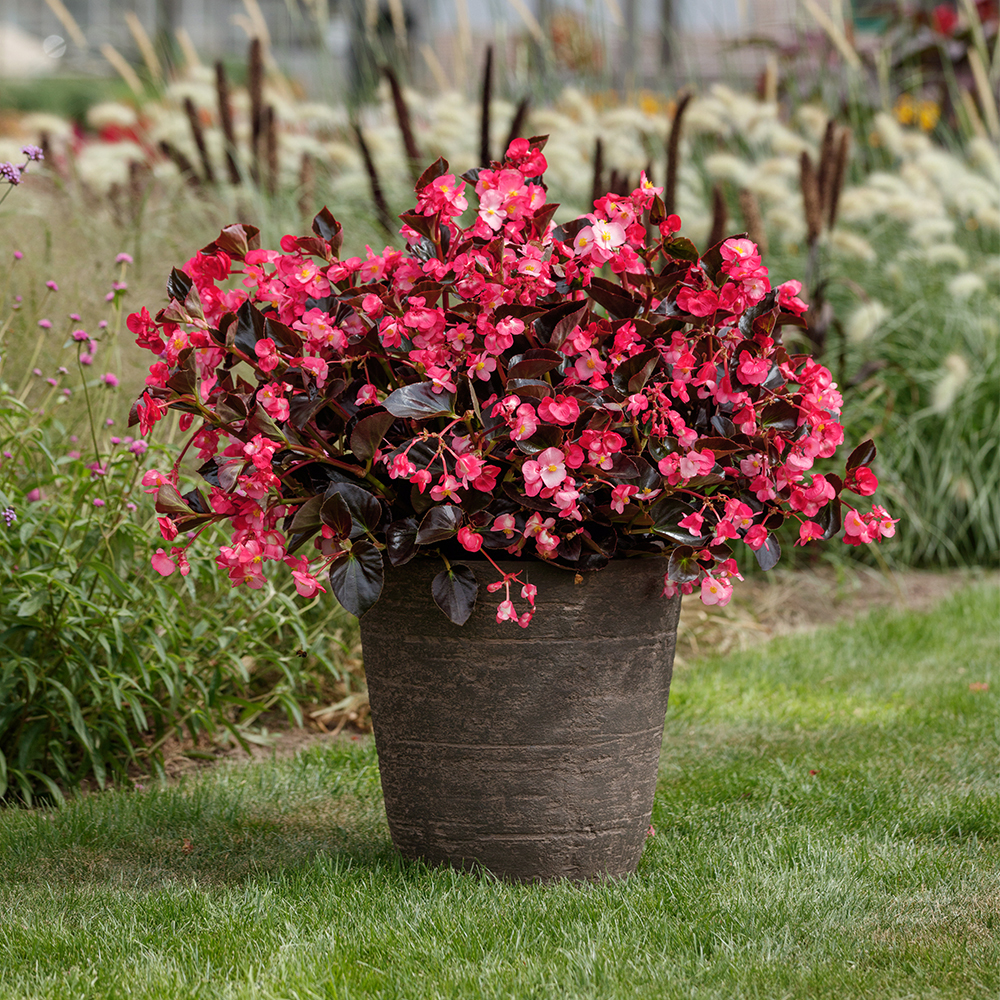
Unlike Other Begonia varieties, the Whooper Begonia is supersized and has bright red petals for flowers. Their dark green leaves are wide and oval-shaped with deep lines on the foliage surface. This variety produces mass leaves and flowers, so they can be grown in containers and nursery beds.
They are appreciated for their colorful bloom, as they can light up any environment it is grown in. They thrive best in warm temperate conditions and should be watered thoroughly. This variety should be grown in organic soil irrespective of where they are grown in containers or nursery beds.
If grown in containers, you must choose a well-drilled container for potting. A well-drilled container allows good drainage of water and prevents water-logged soil. Because they tend to grow bushy, this variety should be misted regularly to enhance humidity levels.
The Whooper begonia must be grown in an area where it can receive bright sunlight, as this is a requirement to preserve and enhance their foliage color. They are perfect options for house-warming gifts.
3. Rhizomatous Begonia
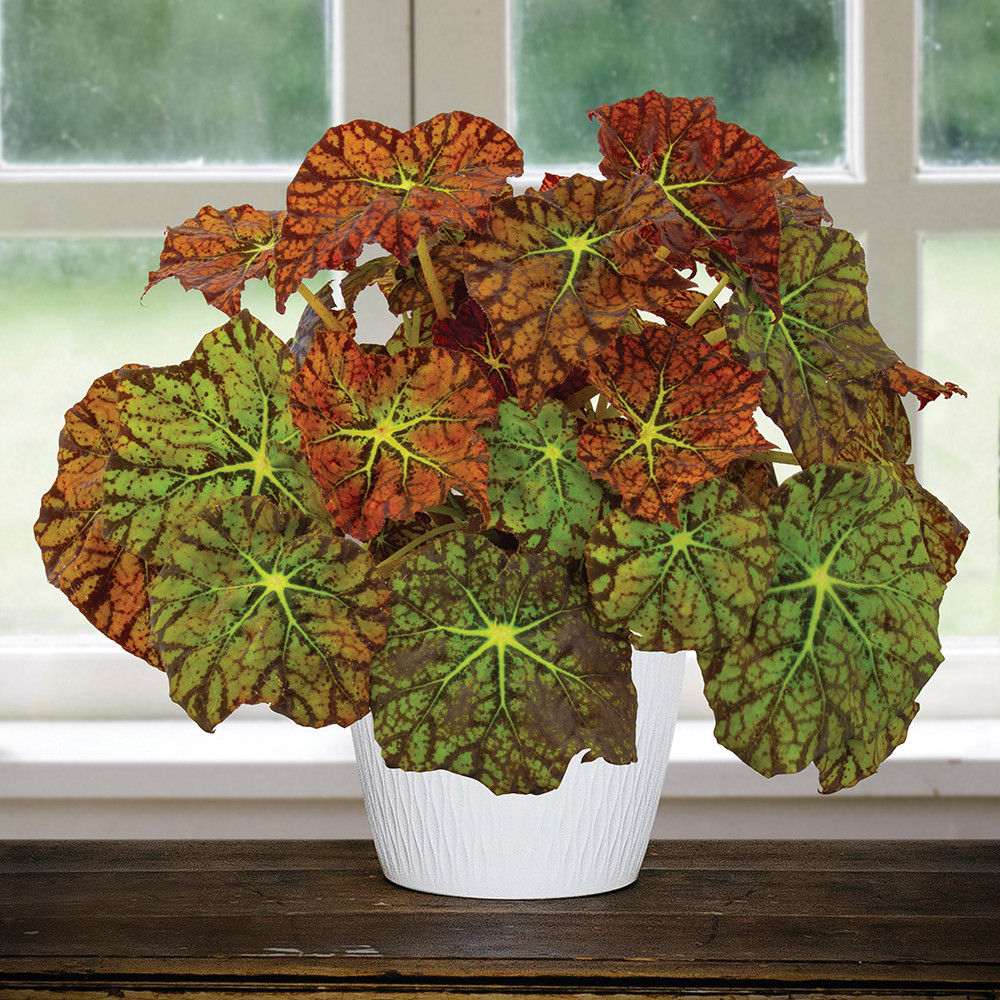
The Rhizomatous Begonia has a unique foliage shape, design, and colour. The Rhizomatous Begonia has different species with varied foliage shapes and colours. Generally, most Rhizomatous begonias are wide.
This variety does not produce colourful flowers during their bloom time unlike other varieties, but their showy leaves complement the deficiency.
They can be grown as indoor and outdoor plants. Rhizomatous Begonia grown indoors does not grow as large as those grown outdoors. If you want your Rhizomatous in all its glory, grow them outdoors in nursery beds. Their growth needs are moderate watering, and proper lighting.
Organic soil, appropriate temperate condition, regular misting, and pruning. Ensure the Rhizomatous Begonia is grown in an area where it can receive bright sunlight for about 5 hours daily.
For Begonia grown indoors, do not place them in dark areas but in places where they can receive sufficient lighting, whether natural or artificial light. Artificial light from bulbs and lamps comes in handy when sunlight is insufficient.
4. Double Picotee Begonia
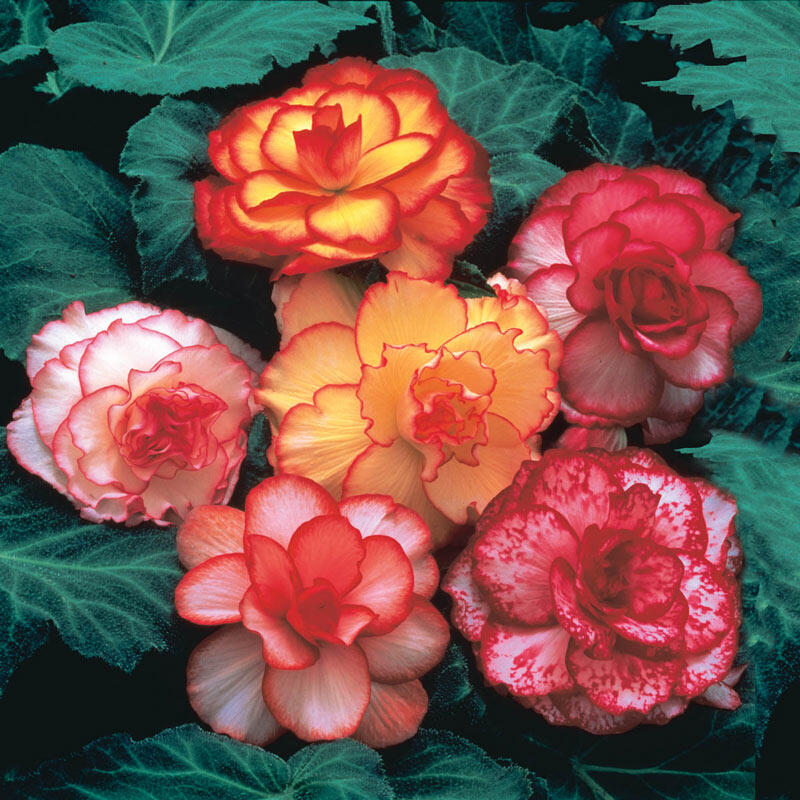
The Double Picotee is classed under the most colourful Begonia varieties. During their bloom time, they produce petals that are usually in rounded layers, forming an attractive bunch. For foliage design, the Double Picotee has wavy edges.
This variety is a good option for bouquets. The dominant colour of their flower is orange, although the edges are darker. They thrive in temperatures between 65 °F-75 °F. Growers are known to move their flowers indoors to beautify their environment.
Their bloom time is during spring and mid-summer. To get a full bloom, ensure this variety is exposed to sufficient lighting, thorough watering, periodic fertilization, and regular pruning to enhance bushy growth and a beautiful shape.
You must ensure this variety never dries out before watering it. Use a moisture gauge to determine the needed amount of watering. This helps prevent overwatering and under-watering, which can be terrible conditions for your Begonia plant to grow in.
Fertilizers can enhance their flower growth and colour but should be applied moderately as stated in the package instructions.
5. Rex Begonia
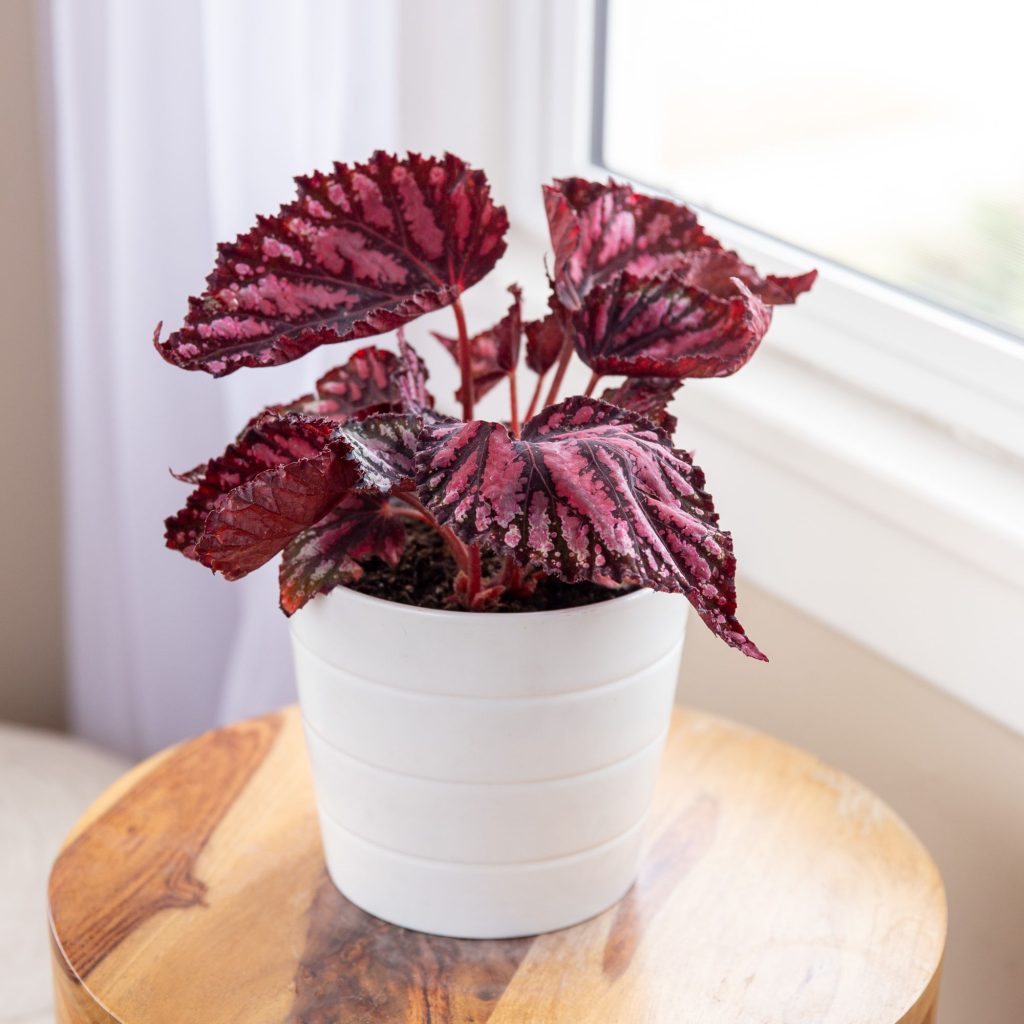
This stunning variety has an attractive foliage appearance when compared to other varieties that do not produce flowers during bloom time. The unique Rex Begonia is mostly grown as an indoor plant for its bright burgundy leaves. Some other varieties have their colours in green, silver, and purple.
This variety has its origin in East Asia. For Rex Begonias grown indoors, their leaves can grow up to 6 inches in width. Those grown outdoors can grow up to 18 inches in height and 17 inches in width.
They thrive in temperatures between 60 °F-70 °F. Since they are not grown for their flowers, they are suitable for both indoor and outdoor propagation. Rex Begonias must be grown in well-lit areas especially when grown indoors.
Growers must ensure they receive sufficient lighting regardless of their placement-whether in dangle baskets or hanging shelves.
You can rotate their containers to ensure an even spread of sunlight, or you can take them outdoors to receive about 5 hours of daily sunlight before moving them in. The Rex begonia must be misted regularly to improve its humidity and eliminate dust.
6. Dragon Wing Begonia
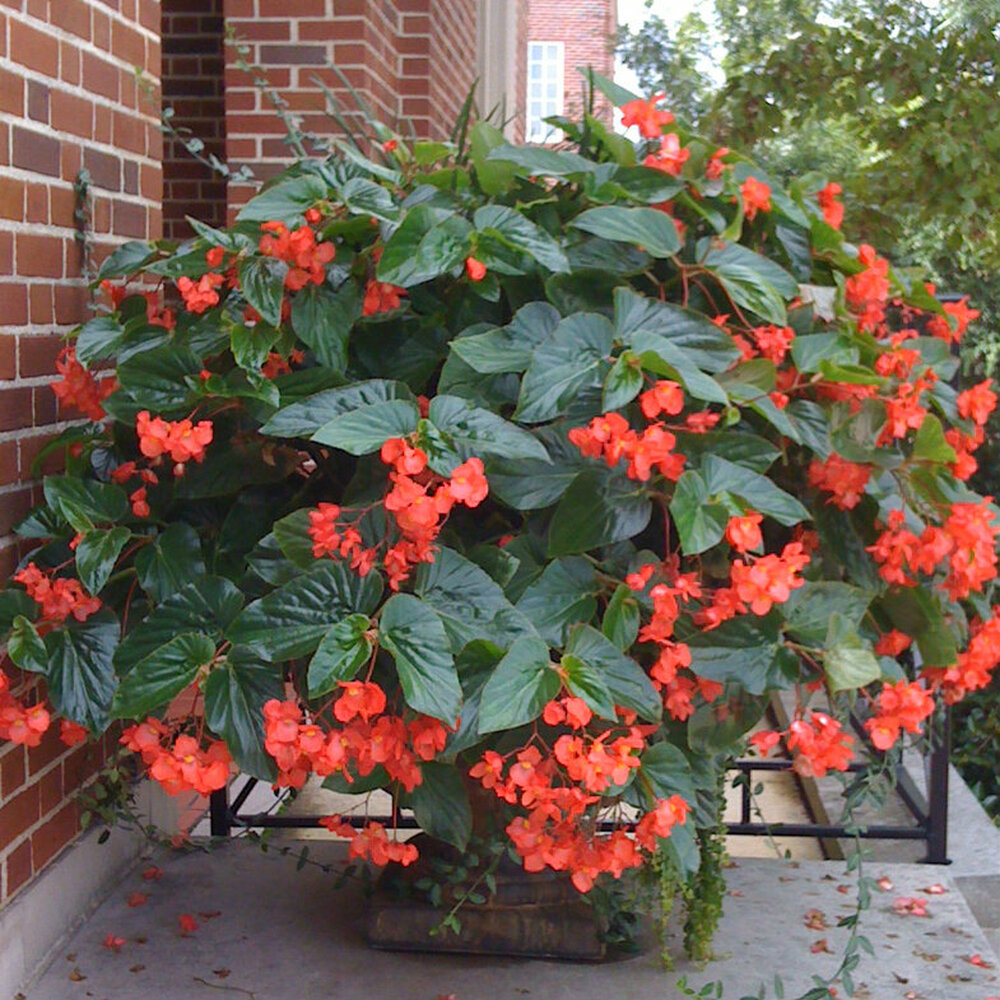
This attractive lot has showy leaves with bright red petals for its flower. The leaves have a shiny texture, although their leaves are not as attractive as the flowers they produce when they bloom. They have their origin in South America.
They thrive in temperatures between 65 °F-75 °F. They can grow up to 2 ft. in height. The Dragon Wing can pass for a standard plant or trailing plant depending on how regularly they are pruned. The flowers have a trailing feature which is the reason growers make use of hanging baskets for their placements.
The Dragon Wing plant is drought-tolerant in comparison with other Begonia varieties. To boost their growth and bloom colour, apply fertilizers every two weeks during their growing season which is spring and summer.
They should be grown in areas they can receive sufficient lighting to preserve and enhance their foliage vigor and colour. Their growth requirements are the adequate provision of water, lighting, organic soil, fertilizer, and appropriate temperature.
7. Mandalay Pearl Begonia
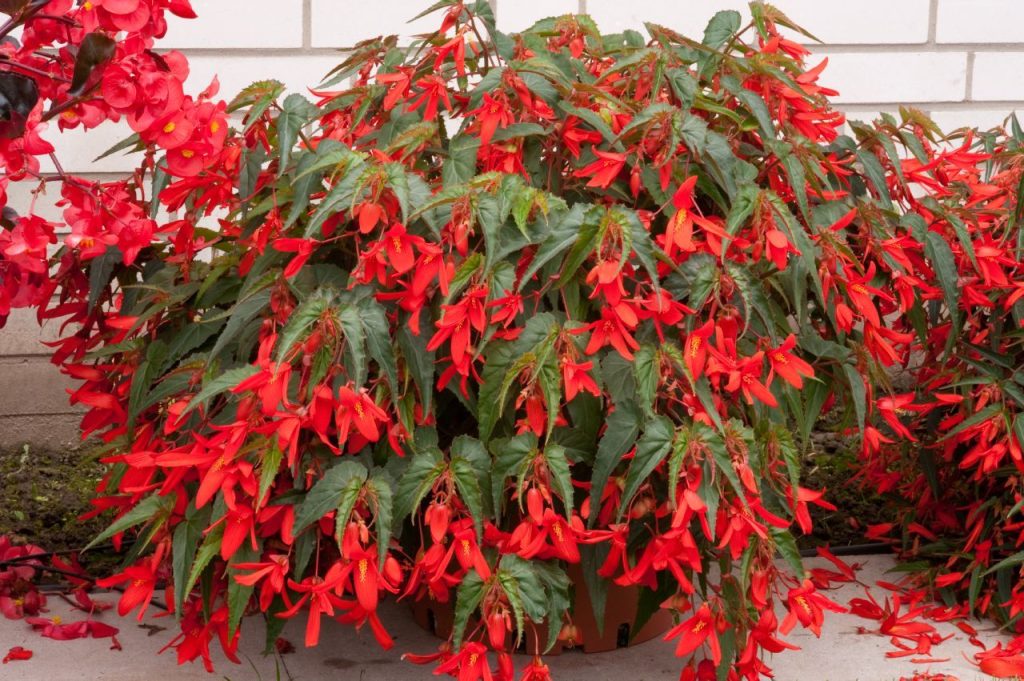
The Mandalay Pearl is one unique variety that captivates onlookers. With their leaves and flowers which grow in a tipped-down manner, they add pops of colors to any environment they are grown in. Some varieties produce red and white flower colors when they bloom. They are easy to propagate and low maintenance plants.
They can be purchased from nurseries and online plant stores. After receiving your order, ensure your Mandalay Pearl is allowed to adjust to the temperature of your environment before fertilizing them. This helps reduce the effect of a transplant shock on the plant.
Provision of moderate watering, organic soil, bright sunlight and periodic sunlight is enough to enhance their growth. Misting their leaves regularly improves the humidity level and helps ward off dirt and pests.
Growers must ensure they regularly watch out for pest infestations and change in foliage appearance as this may be an indicator of a plant issue. Remember to keep your pets and kids away from the Mandalay Pearl Begonia because they are toxic.
8. Cane Begonia
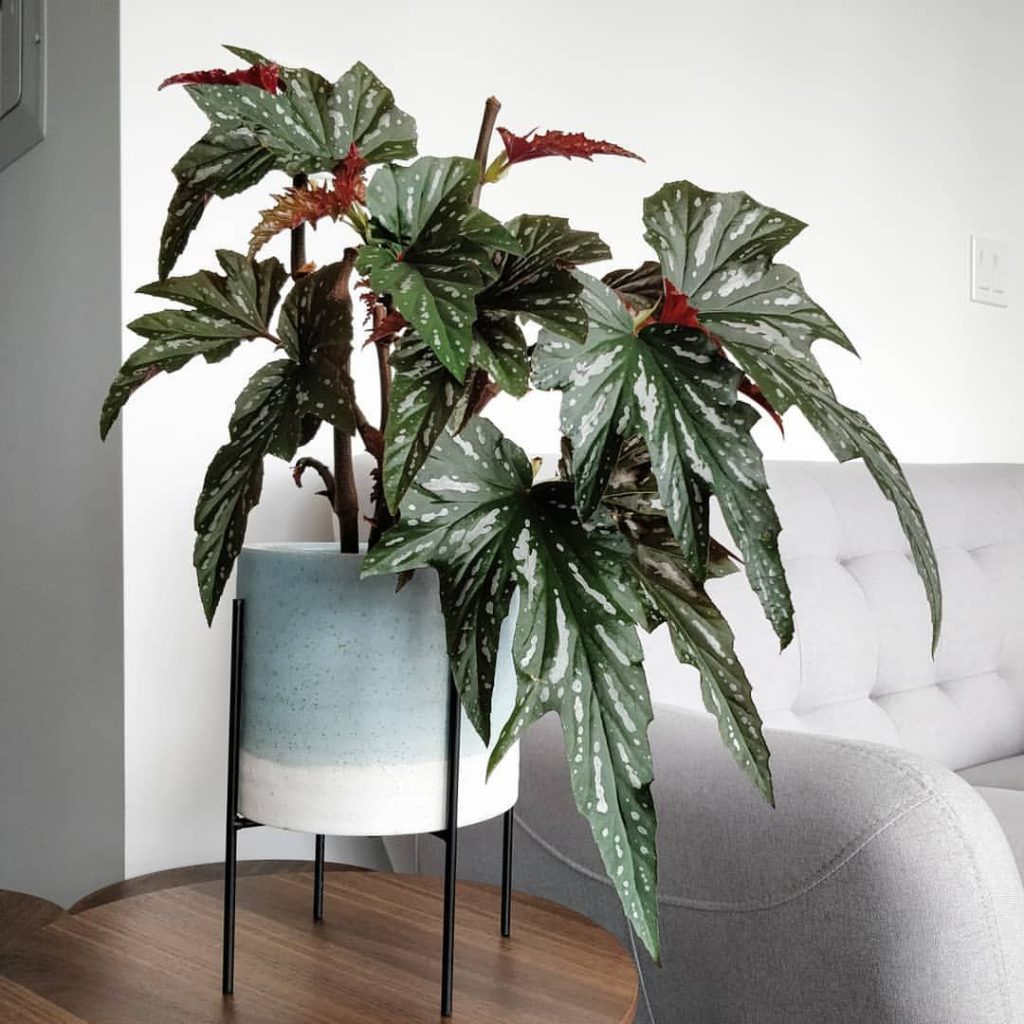
Also referred to as Begonia Gryphon, this variety has an attractive foliage shape and design. Their dark green leaves are curly with wavy edges. For foliage design, their light green splotches on the surface. Their foliage colors are hues of green, gold, and brown.
They can be grown as indoor or outdoor plants. This variety does not produce colorful blooms like the other begonia varieties, but their attractive foliage makes up for the inconsequential flowers. Due to this reason, they are mostly grown as indoor plants and placed in attractive containers.
When properly tended to, they can grow up to 18 inches in height and 17 inches in width. Like other varieties, they are low maintenance and beginner-friendly. For outdoor propagation, you can grow them alongside other colorful varieties if you desire.
Growers must ensure their Cane Begonia receives adequate lighting because this variety tends to grow bushy and several parts of the plant may be deprived of proper lighting and watering. The thick and glossy leaves of the Cane Begonia should be misted regularly.
9. Scarlet Begonia
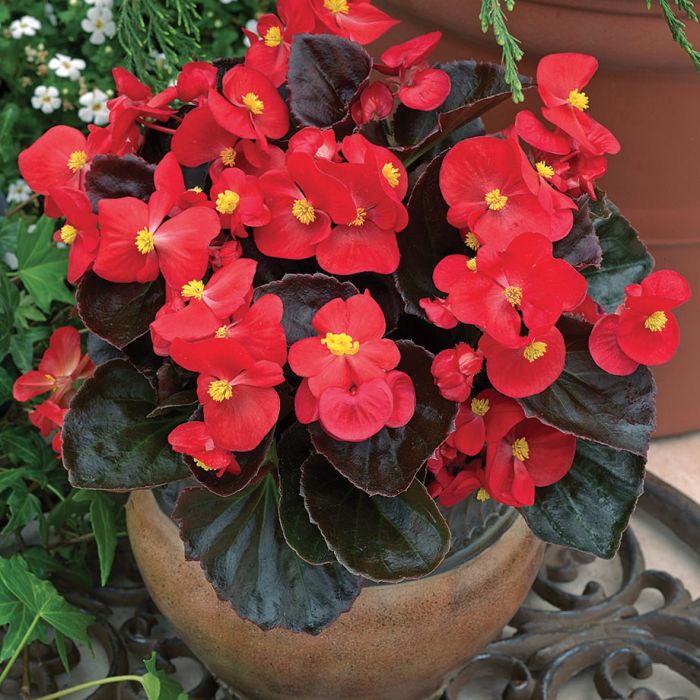
This variety is popular for its brightly coloured pink flowers. The Scarlet begonia is propagated mainly for the flowers they produce during their bloom time. This variety has its origin in Brazil. The Scarlet Begonia is commonly grown as an indoor plant due to the colorful flowers they produce.
In addition, they can be ground in nursery beds or attractive containers. You can grow this variety alongside other varieties for mass plantings. They thrive in temperatures between 70 °F-75 °F.
Their growth can be enhanced by applying liquid NPK fertilizer once a month.
The appropriate time to fertilize your Scarlet Begonia is during their growing season. Scarlet Begonias are susceptible to attacks from mites, mealy bugs, and whiteflies. Regularly check for these pests to combat them early before damage is done to your plant.
In addition, checking for a change in foliage appearance color and vigor helps detect early if the growth process of the plant has been affected.
Expect a thriving plant if adequate watering, proper lighting, organic soil, appropriate fertilization, warm temperature, and a pest-free environment is provided for your Scarlet Begonia.
10. Rieger Begonia
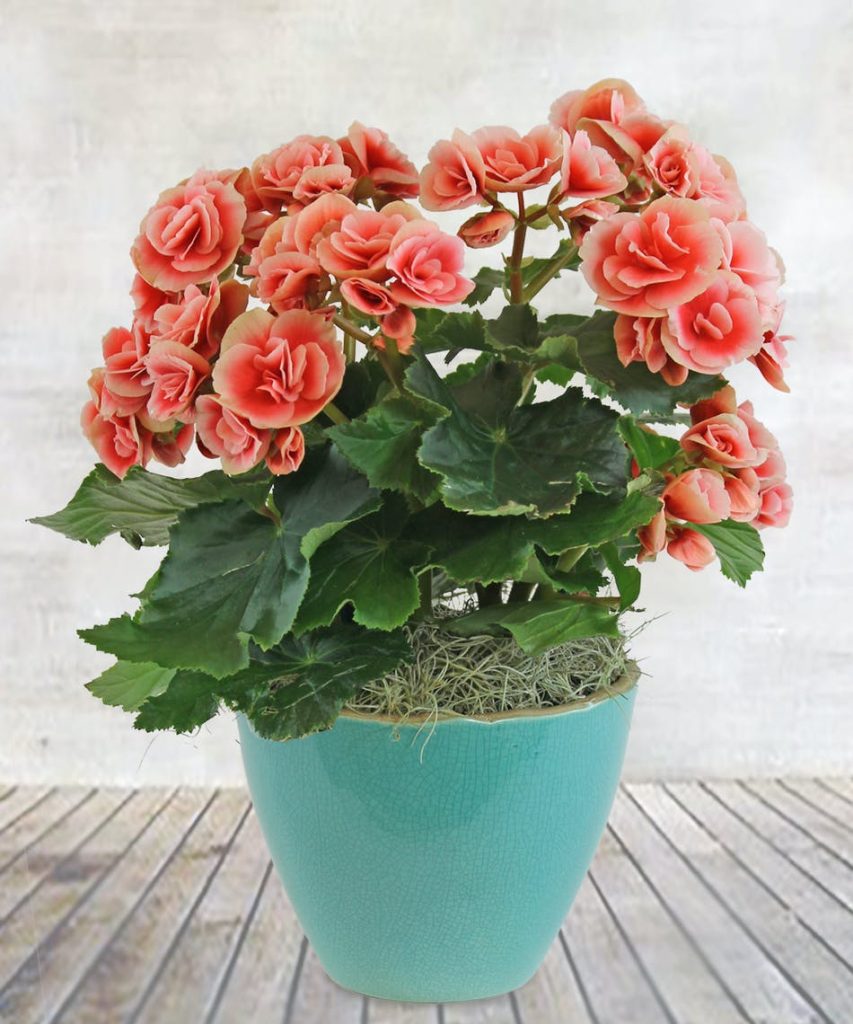
The colorful and compact flowers the Rieger Begonia produces are one reason most growers consider this variety a favorable option for propagation. The compact flowers come in red, orange, pink, white, and yellow.
They can be grown indoors and outdoors but if you desire to have a colorful outlook, grow them outdoors.
Rieger Begonia grown indoors cannot receive the sufficient amount of sunlight needed to produce flowers during their bloom time. What growers can do is grow this variety outdoors till bloom time and after the blooming season, move them indoors to enhance the interior decoration of the home.
Ensure their soil never dries out before watering. Always check the moisture level of the plant to determine the amount of water needed before watering; this helps prevent underwatering or overwatering.
Although this particular variety does not produce large flowers like other varieties, they can still be used for bouquets due to their sturdy stalks. Provide their growth needs and watch your Rieger Begonia have a colorful bloom.
Final Note
Begonia plants are generally low-maintenance plants that require affordable and easy-to-provide growth requirements. Most of their varieties are good beginner options.
Due to the colorful flowers, they exude during their bloom time, they can serve as bouquets and house-warming gifts. If you want the best out of the Begonia plant, propagate more than one variety if your schedule allows.
More varieties of your favorite plants:
- Syngonium Varieties: 10 Common & Rare Types Of Syngonium
- Weigela Varieties: 10 Common & Rare Types Of Weigela
- Begonia Varieties: 10 Common & Rare Types Of Begonia
- Heuchera Varieties: 10 Common And Rare Types Of Heuchera
- Tradescantia Varieties: 10 Common And Rare Types
- Dieffenbachia Varieties: 9 Rare And Common Types
- 15 Croton Plant Varieties, Problems, FAQs (Complete Guide)
